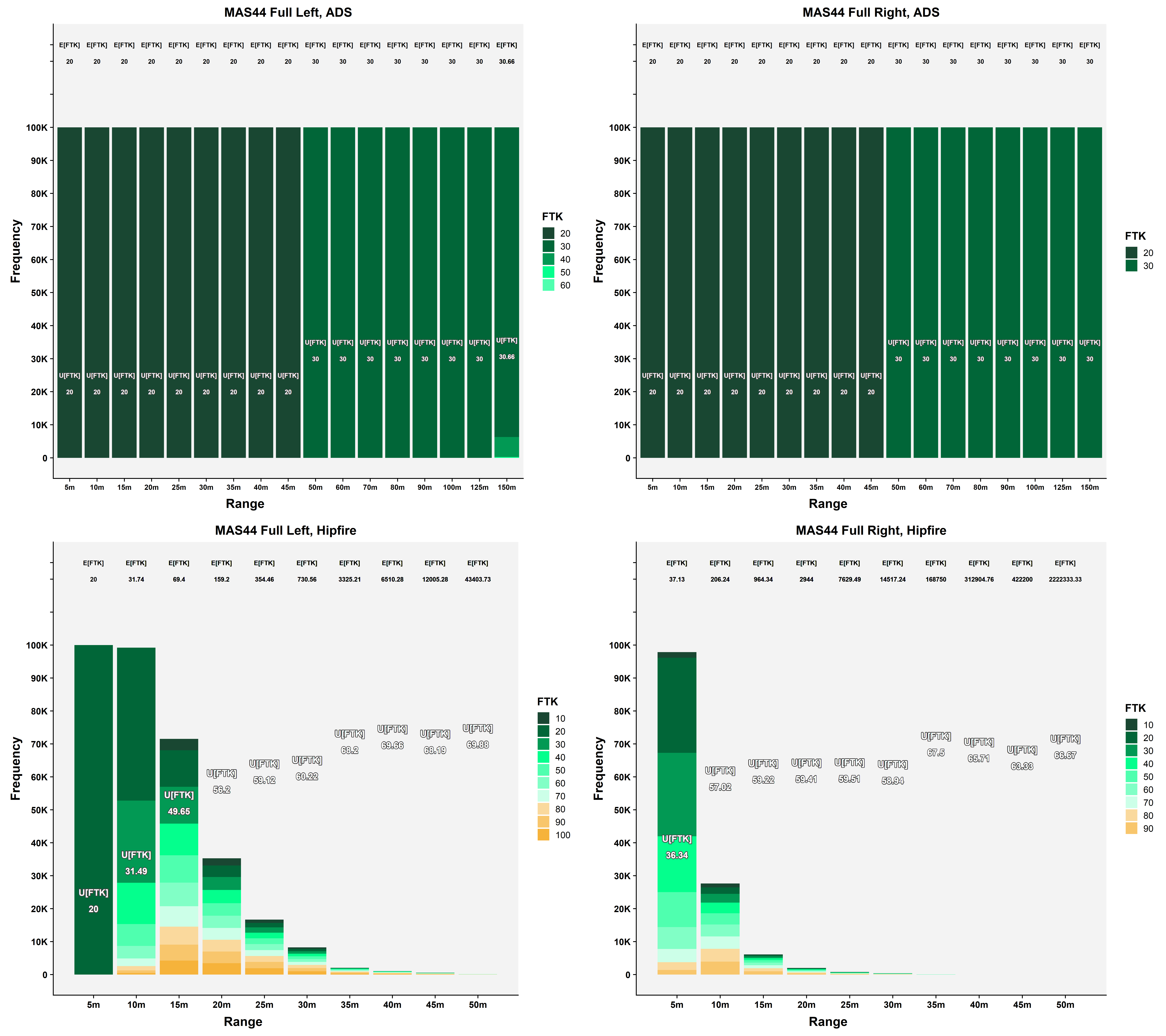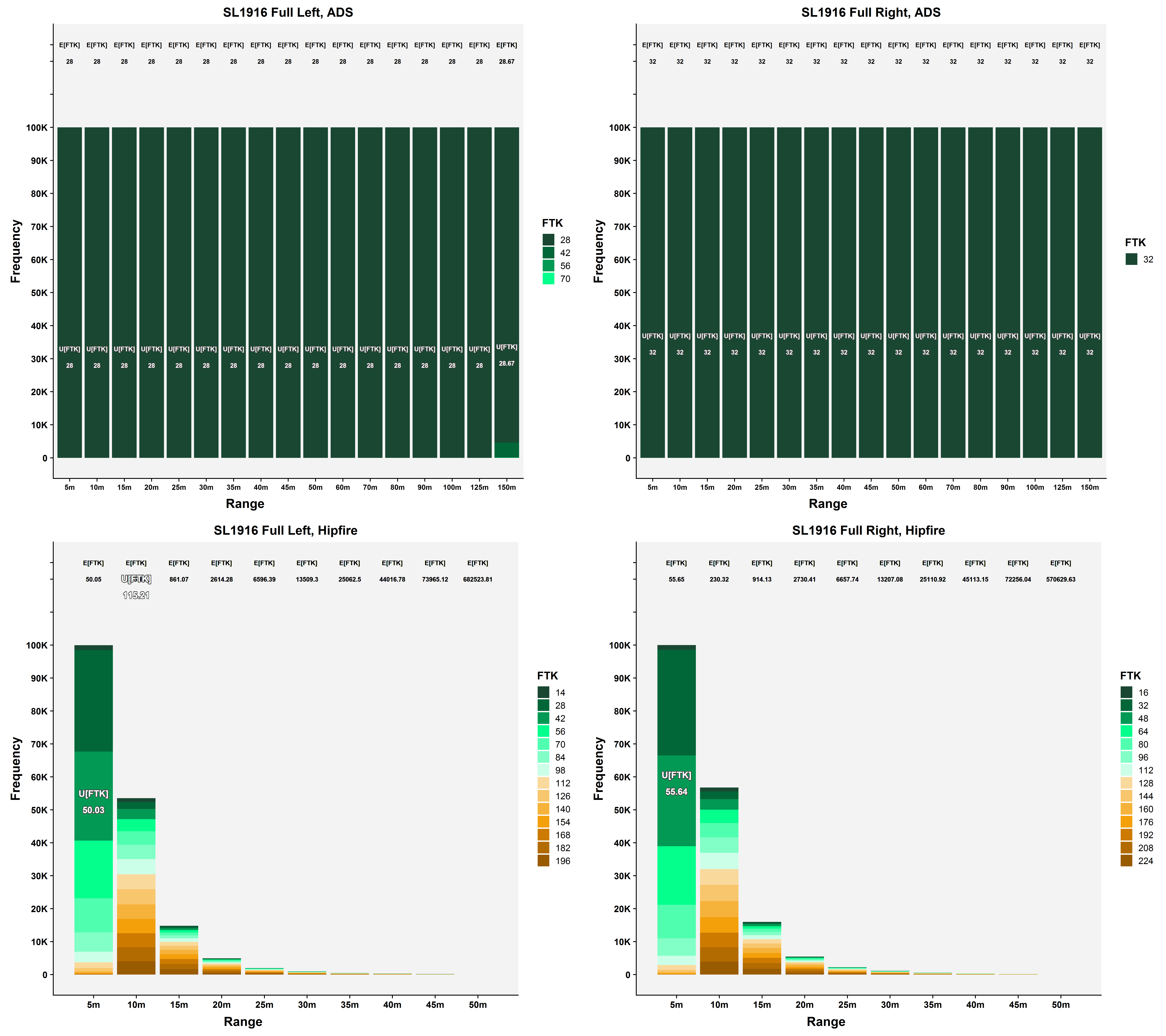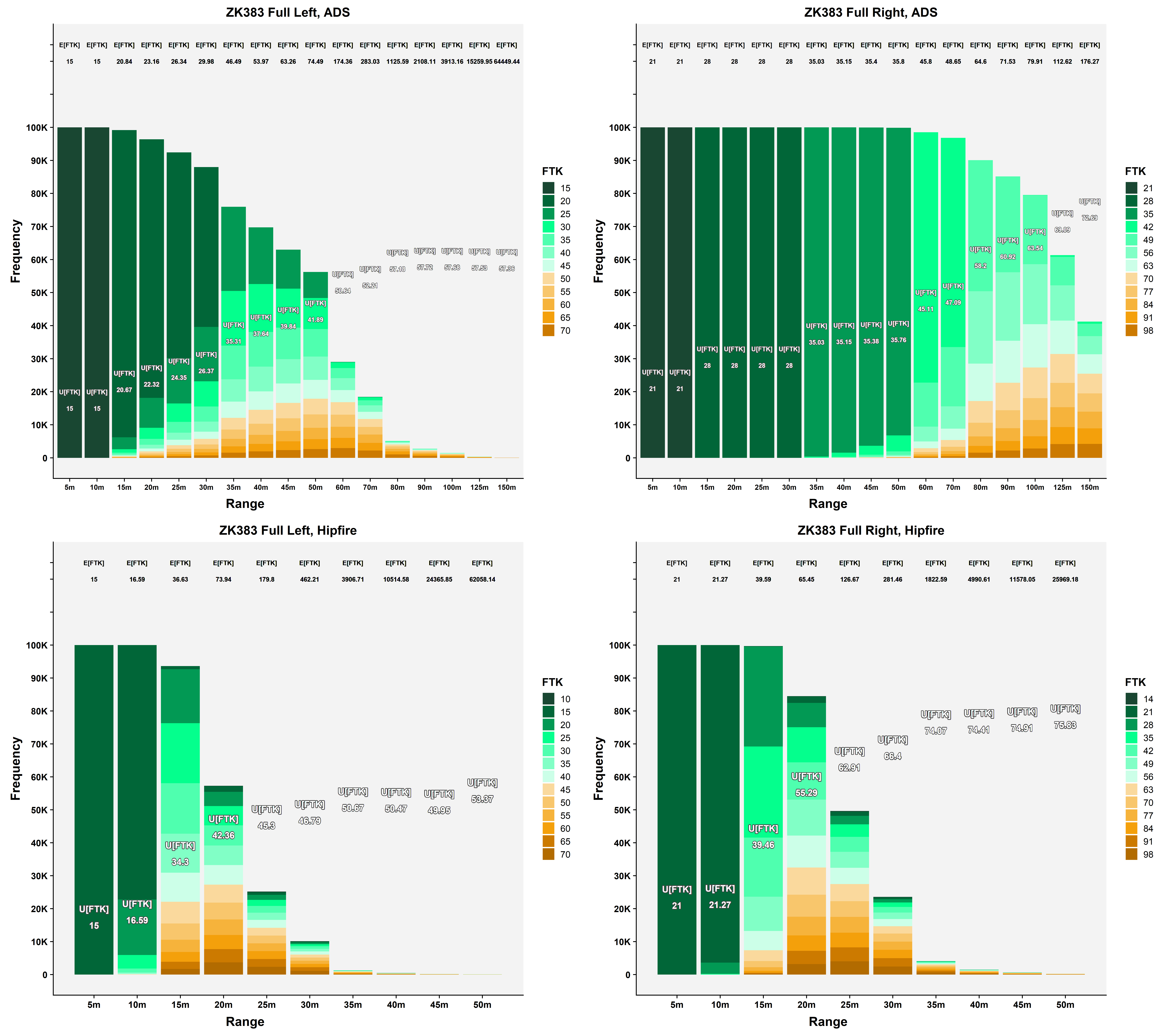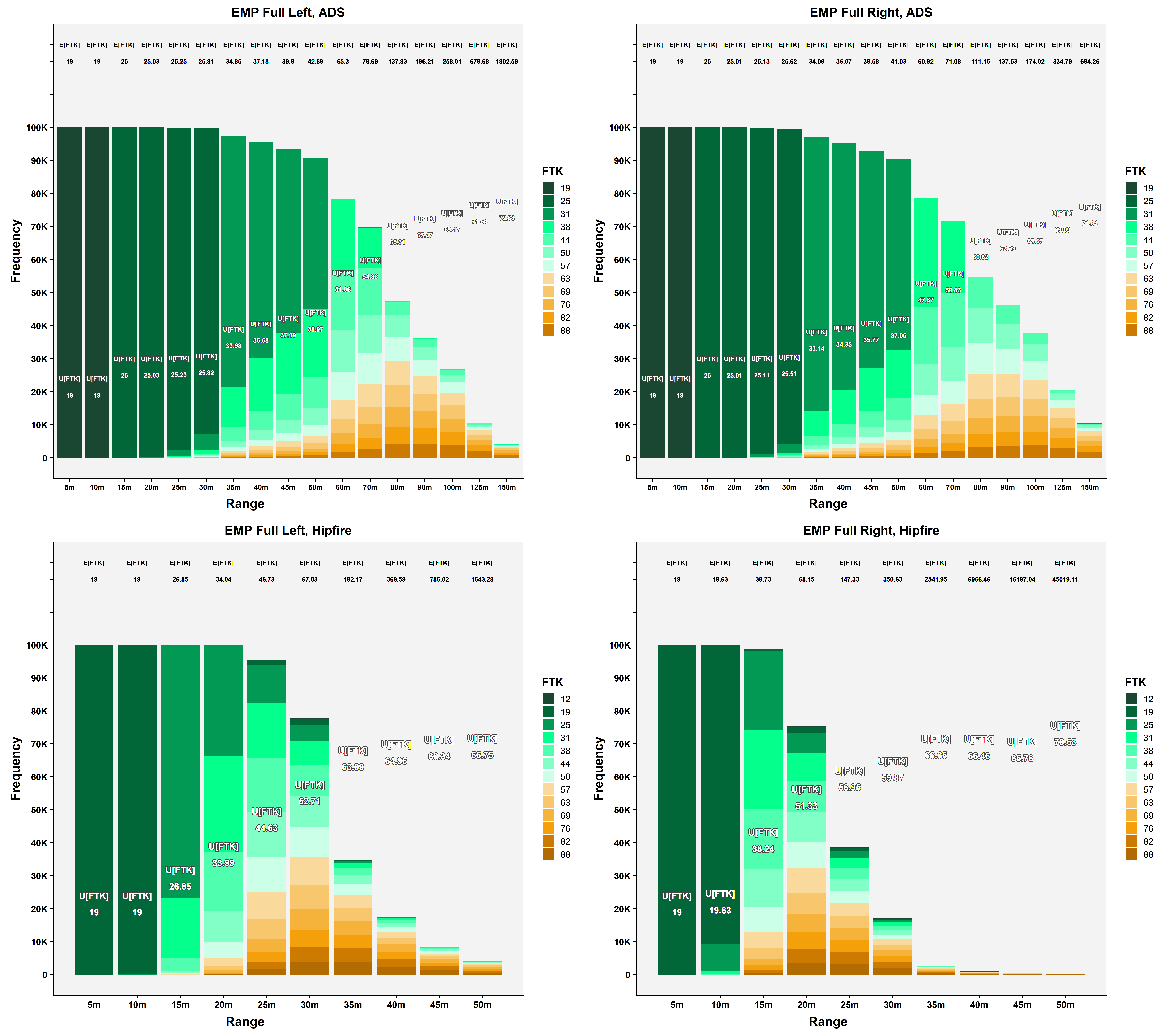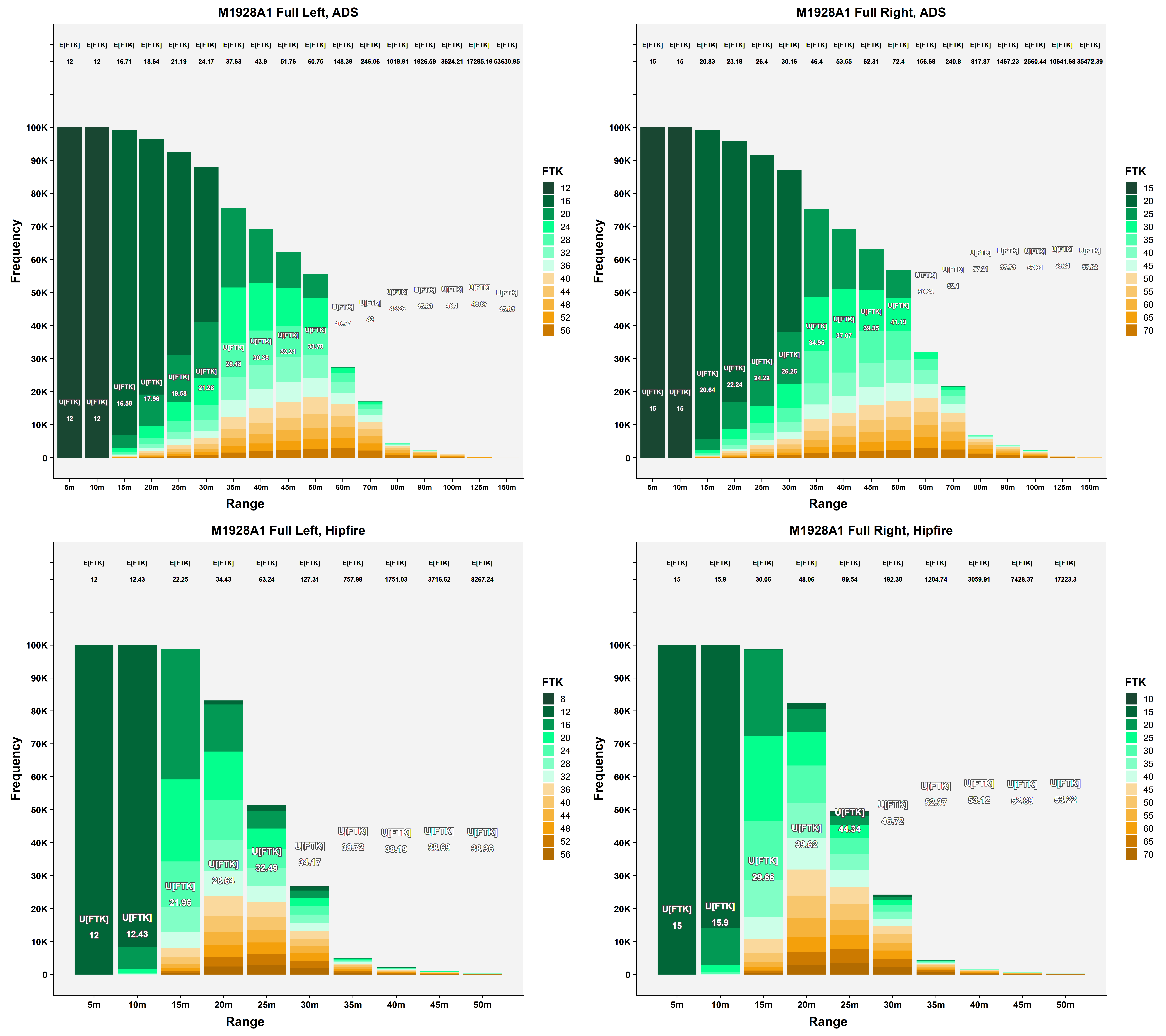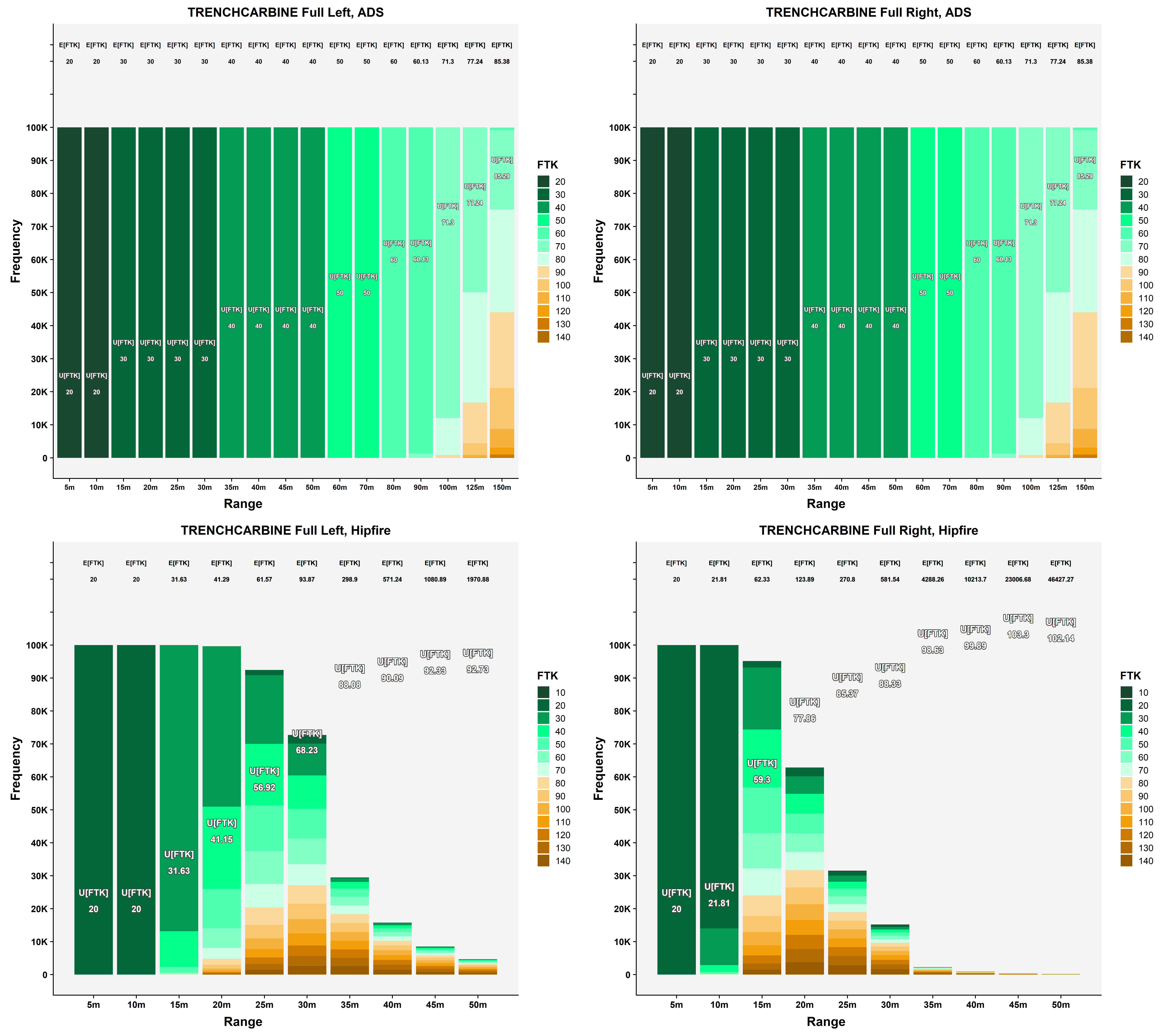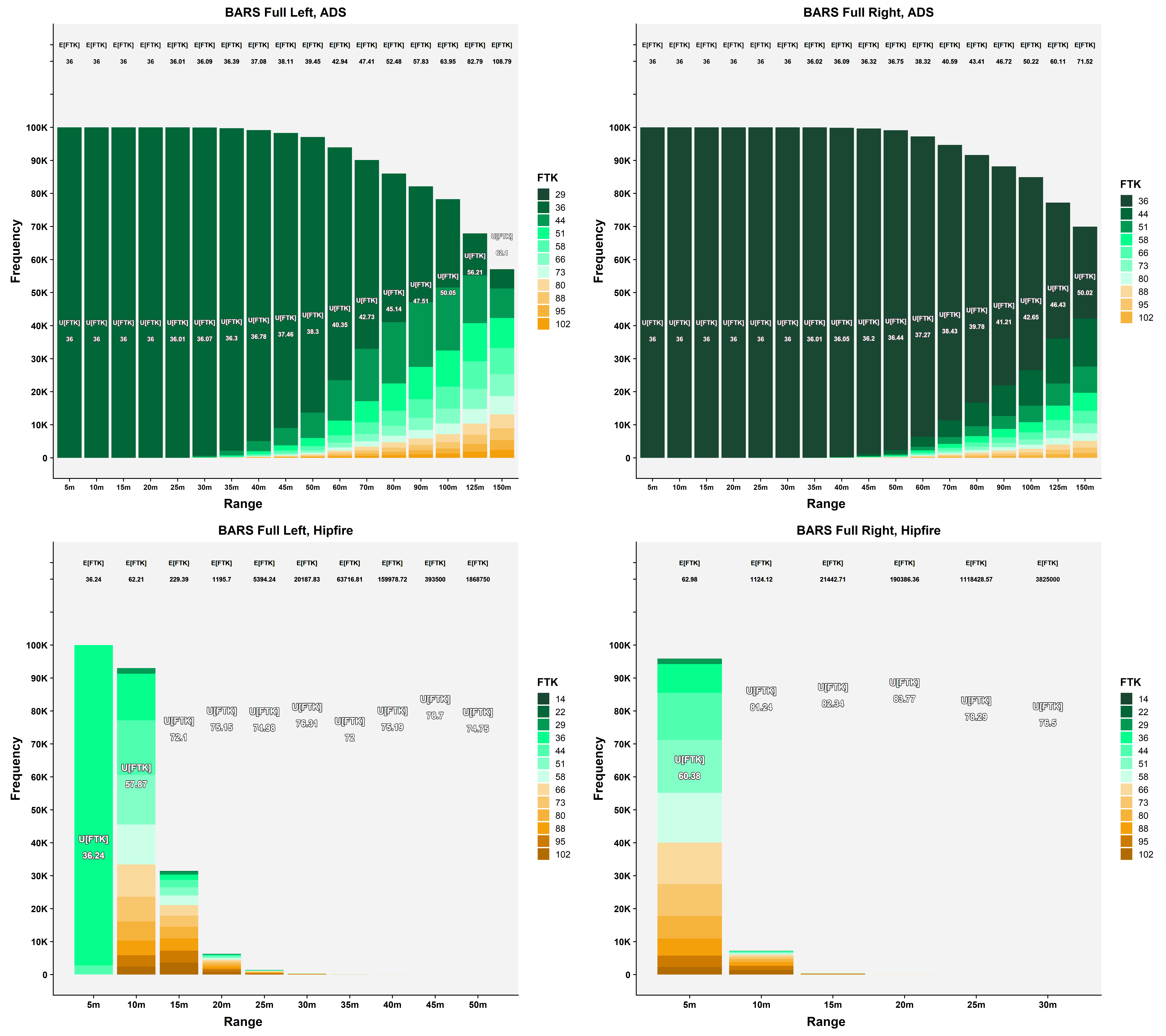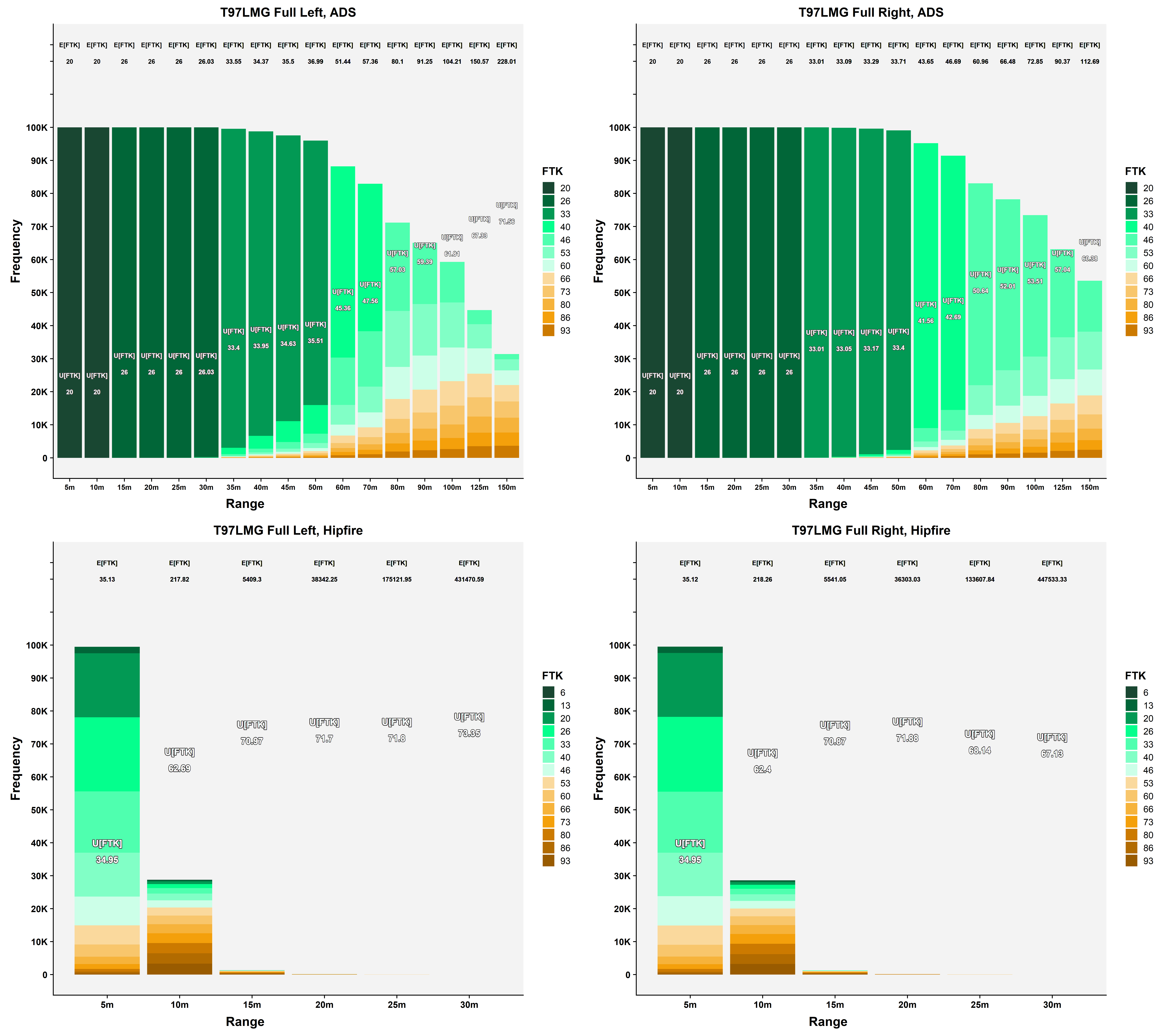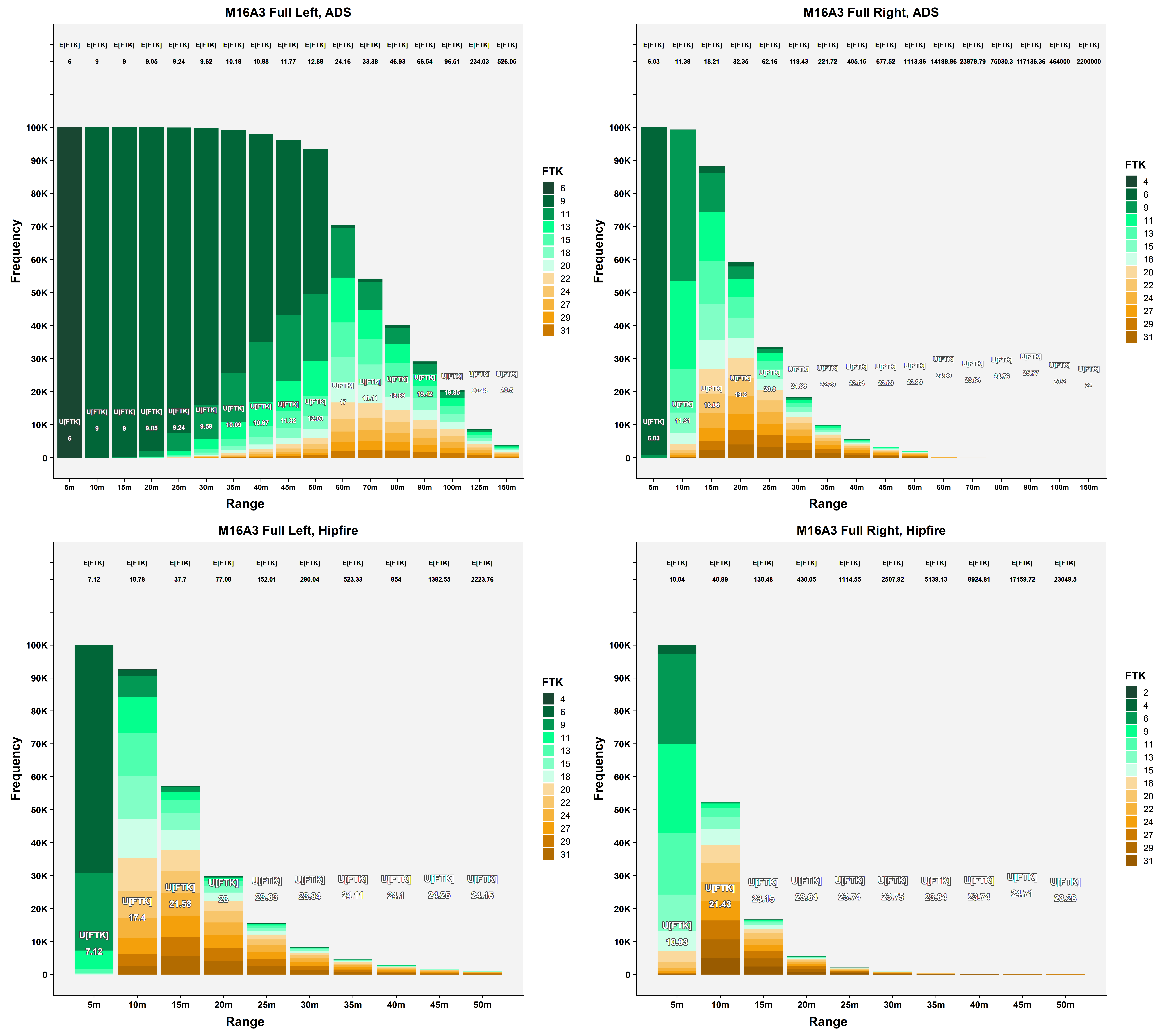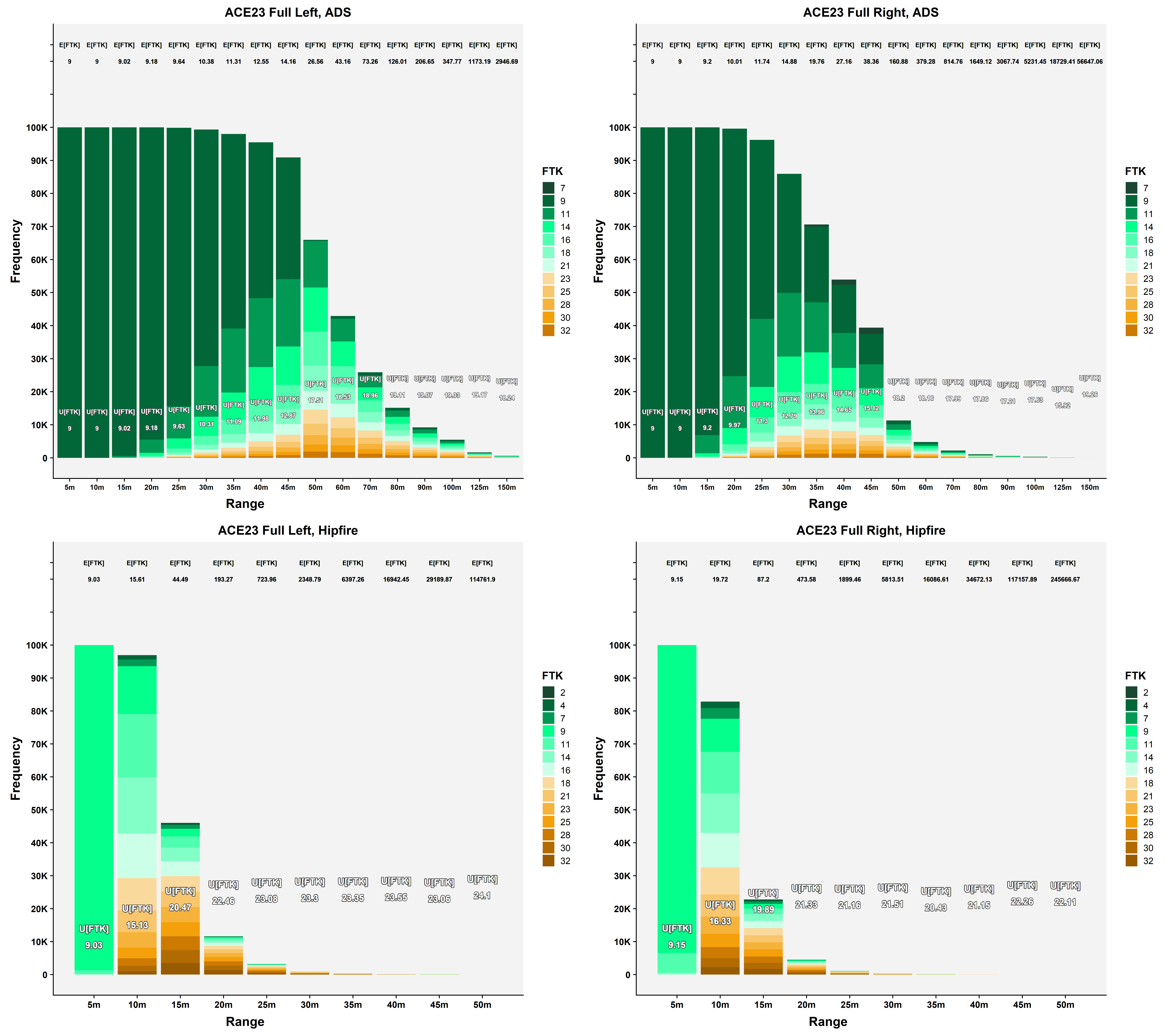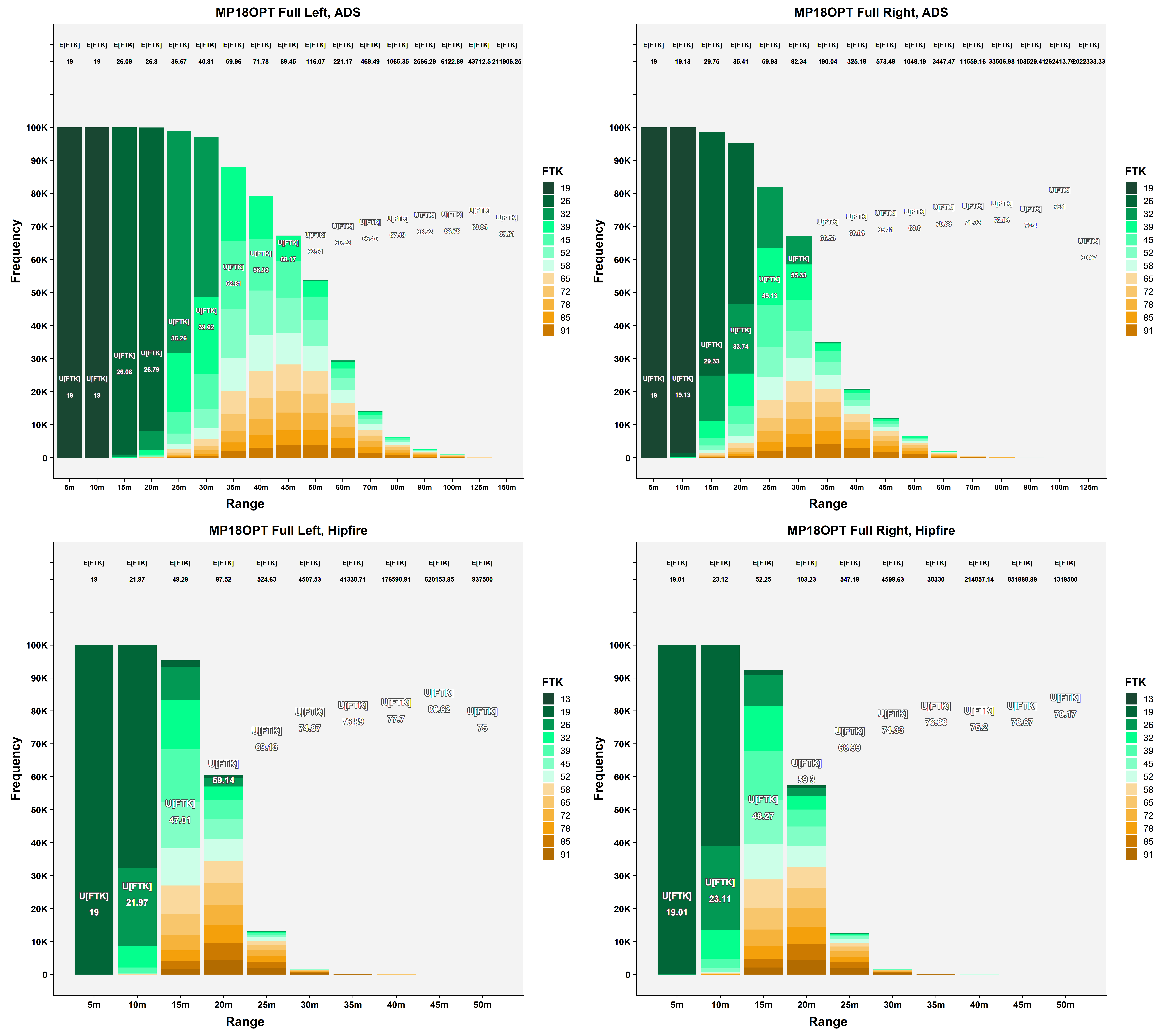With the move to the new forums, I’ll reiterate on the methodology of the FTK Charts.
The following are charts that simulate the lethality of various weapons in BFV using a Hitrater I wrote myself. I enter the weapon’s parameters such as rate of fire, damage, spread, etc. and Hitrater will fire this weapon a set number of times at a target dummy that uses the dimensions of the BFV soldier as specified in the files. I also specify a burst length which is usually 15 rounds but if the weapon doesn’t have that many bullets in its magazine, I use the magazine capacity instead. This is repeated across a number of distances to show the change in lethality at various ranges. For these charts, Hitrater fires the specified burst length 100k times at the target dummy’s center mass in a simulated 60Hz environment.
As Hitrater fires, it will record data such as whether the target has died and what specific hitbox was struck. What we are specifically interested in is the Frames To Kill (hereafter: FTK) of a specific run. As soon as the target dummy has lost 100 or more health, the FTK for that run is recorded but will continue to fire to gather other data. For example, if the dummy died at round 12, the FTK is recorded as a lethal 12 round burst. Because Hitrater is firing 15 round bursts, this means the end result of the data generation contains the total lethality of 100k 1 round bursts, 2 round bursts, 3 round burst, …, and 15 round bursts. This offers a very detailed look at the weapon’s odds of killing at any bullet in the burst length.
There are a few assumptions being made. The first is that vertical recoil and the recoil pattern are perfectly compensated. This means only the influence of spread and horizontal recoil is considered. The shooting stances used are ADS stationary and Hipfire Moving for most weapons. The MMGs use ADS stationary with bipod active and ADS stationary with bipod inactive. Previously MMGs were in line with other weapons but the data presented was useless due to extremely low odds of killing in such stances.
The X-Axis of each chart is the range to the target dummy. The Y-Axis is the number of runs. The shaded portions are the different FTKs. The FTK data is presented as a histogram to display the totality of each lethal burst length. If there were runs that did not kill, then that is shown with empty space. Thus, the total coverage of each range will reach 100k and the emptier the space the less likely the weapon achieves a lethal run at that range. The white number is the Average Lethal FTK (U[FTK]) for the range and is the mean of all lethal FTKs for that run. The black number at the top is the Expected FTK (E[FTK]) and factors in the runs that did not kill. It’s very helpful for the triple digit ranges where the lethal runs can be so small that U[FTK] can appear to be very good when realistically you are highly unlikely to get that number.
Lightning Strikes
kht120’s equivalent Reddit thread
Hitrater should fire in the neighborhood of 1 million times for even better results but that would take too long and I appreciate my free time. The limbs should also be represented in some fashion but they do not have transforms specified in the data and have to be ignored.
I definitely would recommend picking up the ZK383 from the new Lightning Strikes drops. SMG ADS performance without ADS upgrades and hipfire performance have improved. However, it is not as if SMGs have suddenly become fantastic mid-range weapons. The distribution of lethality changed but overall lethality remains almost completely the same outside of the aforementioned buffs to performance without ADS upgrades. What the accuracy changes did is increase the odds of achieving faster FTKs versus slower FTKs and in the charts works out to only a few frames improvement in the U[FTK] department.









